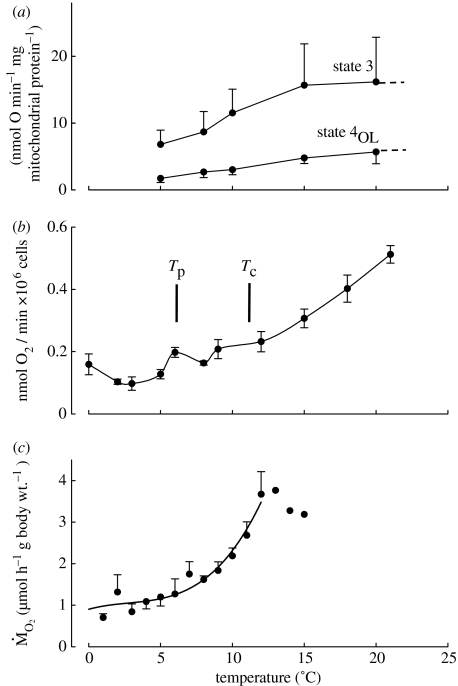Figure 3.
Comparison of metabolic rate data obtained in (a) isolated mitochondria (Lannig et al. 2005), (b) isolated hepatocytes (Mark et al. 2005) and (c) intact specimens (Mark et al. 2002) of the Antarctic eelpout (P. brachycephalum). High thermal limits are apparent in whole-organism oxygen consumption where it levels off close to critical temperatures, characterized by the onset of anaerobic metabolism (cf. figure 5). Pejus and critical temperatures (Tp and Tc) seen in vivo (according to Van Dijk et al. 1999; Mark et al. 2002) occur within a temperature range, where functional integrity of mitochondria and cells is still undisturbed. The pattern of hepatocyte respiration rates as studied in the Antarctic eelpout, P. brachycephalum, acclimated to 0°C reveals an energetic minimum that matches the putative thermal window of the species.

